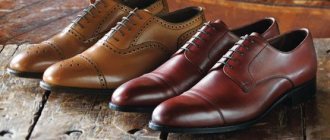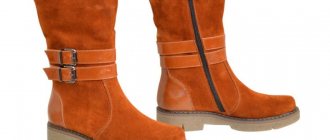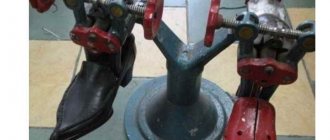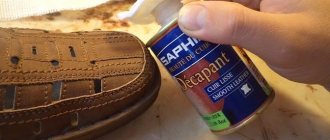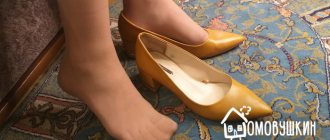Nothing lasts forever and rubber shoes, no matter how strong they are, also wear out and deteriorate like any other. But what if you can delay this and resuscitate your favorite rubber boots ? What if they can be sealed and their former waterproofness restored? Or paint it and be fashionable again in rainy weather? I have collected many different methods that will help extend the life of rubber boots or other rubber products (for example, an inflatable boat), and will also help eliminate minor problems, such as slipping soles. Choose the ones that suit you and be glad that going to the store and spending money are postponed.
Author of the article: Hostess.
My name is Natalya and I have been managing my home professionally for more than 15 years. Saving my extended family's favorite things; I protect our house from fleas, midges, bloodsuckers and other rodents; I find faithful electronic assistants in household chores. And I am happy to pass on this entire experience to you)
Do you also want to become a Hostess on our blog? There's enough room for everyone! Just write to us via the “contact” form)
5 proven ways to stretch leather shoes
Before proceeding with size increase procedures, visually determine the type of skin. If it is thin and soft, a light touch will be enough. But for rougher shoe leather, almost any method is good - this natural material very steadfastly endures any “hardships of life.”
Method 1 – wool sock
So, let's start with the gentlest possible approach - the usual grandma's breaking in unsuitable shoes on the sock. It’s simple: wear tight shoes on the warmest possible (terry or woolen) sock and walk around the apartment for a couple of hours, taking them off from time to time so as not to put pressure on your feet. You shouldn't expect quick results, but your favorite shoes won't deform and will fit your feet perfectly.
Method 2 – alcohol
If the usual stretching did not work or you were unable to go out for the prescribed two hours, you can speed up the procedure a little with the help of an alcohol solution. To prepare it, mix medical alcohol and plain water in a 1:1 ratio, pour it into a spray bottle and treat the inside surface of the shoe. Let it soak in the solution a little, and then put it on a warm sock and wear it for half an hour.
Any remaining moisture should dry naturally away from direct sunlight. The alcohol solution can be replaced with household alcohol-containing window cleaner, cologne or eau de toilette.
Alcohol dries out the skin, so after the shoes are dry, treat them with slightly warmed Vaseline or moisturize them with any cream.
Method 3 – Vaseline and castor oil
If you need to stretch expensive shoes a size or more, use a tandem of Vaseline or castor oil and a special shoe last. Generously coat the inside of the shoe with Vaseline and place a shoe last purchased at a special store there for a day. It will help to gently expand the skin without deforming its original shape. The next day, clean off any remaining Vaseline with a soft cotton pad.
Method 4 – soaking in boiling water
This emergency method is suitable for more undemanding boots and boots made of thick leather. Pour hot water inside the boots for 30 seconds, pour them out and immediately put them on a pair of thick socks. If this kind of “soaking” seems too daring for you, you can simply wrap the unsuitable pair in an old T-shirt soaked in hot water.
But before walking the reanimated all-terrain vehicles, dry them thoroughly at room temperature without using a hairdryer.
Method 5 – freezing
There is another method exclusively for thick boots - stretching using the “cowboy” method or freezing. Both are based on physical processes. In the first case, the “active substance” is ordinary water, which, when frozen, becomes a natural stretcher. But don’t pour it directly into your shoes; it’s better to place a thin plastic bag in the middle and pour water into it. To avoid deformation, leave the package slightly open.
In the second case, pre-soaked grain is poured into the boots, which swells, thereby stretching the leather. The main thing is not to forget about it, otherwise on the second day you will be able to collect waste and wonder where such a specific smell came from in the apartment.
It is best to carry out the procedure at night, so that in the morning you can take out the “frozen” boots and let them thaw at room temperature. Remove the bags and leave the shoes in a cool, dark place all day. In the evening, you can try them on and gently lubricate them with natural Vaseline to restore the natural balance of the skin.
Note: after each aggressive influence, leather shoes should be carefully dried and treated with any natural, odorless oil of vegetable origin or a specialized impregnation. This will extend its service life and maintain a beautiful appearance.
Freezer
Using cold, you can get the desired size within a day. To do this, pour water into a double plastic bag and tie it tightly. The presence of air in the bag is not allowed.
The “bubble” should be carefully placed inside the shoe and placed in the freezer for 10–12 hours. The boots are then removed from the freezing compartment and “thawed” at room temperature.
How to stretch shoes made of fabric, nubuck, suede and fur
None of the previous methods (except for wearing them on the toe) should be used for shoes made of nubuck or any other natural materials. Alcohol is not suitable for the reason that “drunk” shoes will stain, and after drying they may crack, and oils will leave greasy stains on the fabric and suede. Boiling water is too aggressive, cryotherapy will completely “kill” the shape of dress shoes... But remember - there is always a way out!
Method 1 – professional remedy
The easiest way to stretch suede or nubuck shoes is to purchase a special spray at the supermarket. For example, stretching agent from Salamander, Oke, Twist, Salton, Kiwi, Silver. Just ask your consultant how, besides the price, one jar differs from another. Perhaps a more expensive product also provides a water-repellent effect, or is safer for shoes and feet.
Method 2 - using newspaper
A more complex way to stretch shoes made of delicate materials is to use “yellow press”. Crumple up enough newspaper, stuff it inside your uncomfortable shoes, and leave it overnight. The paper will straighten slightly and thereby adjust the width of the shoe.
People's advice suggests moistening newspapers with alcohol or even plain water. We strongly do not recommend doing this: there is a high probability that the printing ink will be imprinted on the walls of the shoes or sandals.
Keep in mind: it is almost impossible to stretch shoes with fur. The best solution would be to wear it around the house with warm socks and periodically warm it up with a hairdryer. You can also replace the original insole with a thinner one from the store. This will make your foot more vulnerable to cold weather, but will allow you to wear the shoes you like without pain.
How to stretch leatherette shoes
It is better to immediately take tight shoes made of artificial leather to the store or give them to friends, because they practically cannot be stretched. Leatherette does not have the softness and pliability of natural leather, so it is too difficult to change it “in the image and likeness” of natural leather. But you can try one of two options.
Option 1 – thick sock
A really effective way to increase the size of leatherette shoes is to wear artificial “suede” or “leather” shoes around the house with a warm sock for several days. To enhance the effect, the internal surfaces can be lubricated with Vaseline. Such tricks will not allow you to make shoes a size larger, but they will help wayward shoes fit exactly on your feet.
Option 2 – paraffin
If your shoes are really dear to you, but they rub or feel too tight when instep, you can try to soften the leatherette a little with paraffin. Before the procedure, dry your shoes and warm them thoroughly with a hairdryer. Then take a paraffin candle, heat it a little over the fire and with the soft side treat the problem areas from the inside (most often the heel, seams, side surfaces). When the paraffin has hardened, put on your wayward shoes with a warm sock and walk around the house for a day or two.
After this procedure, the artificial material should expand in width, and the rough areas will stop pressing due to the slippery paraffin coating. At the end of breaking in, carefully scrape off the remaining paraffin and wipe the shoes with a cotton pad with Vaseline.
By the way, there is another popular way to stretch leatherette shoes - treatment with kerosene. But we doubt its effectiveness, so we strongly do not recommend conducting risky experiments.
Best Techniques for Winter Boots
Breaking in winter boots or boots is much more difficult. There are two main methods: ice and alcohol treatment. Instructions on how to quickly break in winter shoes with the first substance:
- place the bag inside the shoe as close to the toe as possible;
- add water to it and tie;
- Place the boots in the freezer for 10 hours. During this time, the liquid will freeze, enlarge and expand the product.
Any alcohol-containing composition is applied inside the product, then a sock is put on, and boots are put on top. When exposed to alcohol, the leather material takes the shape of the foot. This method is suitable if you need to increase the size of the boot.
An effective way to stretch rubber shoes
More precisely, not classic rubber shoes, but made from PVC, which has been fashionable in recent years.
To find out what material your rain boots are actually made of, heat up an awl and lightly touch the shoe in an inconspicuous place, avoiding punctures. If the material begins to melt, then you have shoes made of polyvinyl chloride (PVC), which will not be difficult to stretch.
Boiling water + thick socks + ice water
Prepare a couple of liters of boiling water, a deep bowl of ice water and several pairs of terry socks. Pour boiling water into your boots and wait 2-4 minutes until the material becomes noticeably softer. Drain the water, put your boots on warm socks, stomp on the spot a little so that the material hugs your foot tightly and stand in a basin of cold water. PVC will not harden to its shape, but to the structure of your foot and ankle.
After this procedure, it is better not to subject the boots to stress for 1-2 days, allowing the material to rest and remember the new shape.
Newspapers
- Stretching in this way does not cause damage to the shoes. You will need a large amount of damp newspaper, which is filled with the product, after which the paper is left inside for 12 hours.
- Then you need to put on thick socks (if possible, several pairs at once) and walk in shoes for as long as possible.
- This process must be repeated until the product reaches the desired size.
How to stretch patent leather shoes
This case is the most difficult, since the varnish coating on the shoes does not allow the leather backing to stretch, and under aggressive influence the varnish cracks and loses its shine. Therefore, stretching such shoes even by half a size is almost impossible; the maximum that can be done is to soften the inner surface of the shoes so that they stop rubbing.
Method 1 – sock + alcohol
First, try the classic method - wearing tight shoes on socks for 2-3 days. To speed up the process, you can lightly moisten your socks with a solution of water and alcohol (2:1) and do not remove your shoes until they are completely dry.
Keep in mind: under no circumstances should you heat the varnish with a hairdryer or hot water, otherwise dull spots and mesh cracks cannot be avoided. You should not warm up patent leather shoes even from the inside; in 80 cases out of 100, the polish loses its properties, becomes brittle and dull.
Method 2 – rich cream + pad
The most effective way is to use fatty cream, Vaseline or any natural oil and a special pad. If you are afraid of stains, you can replace fatty substances with a special stretching foam for patent leather shoes. Treat critical areas (heel, toe, places where corns form) more thoroughly and lightly knead with your hands to speed up the stretching process
After this, put the shoes on a special last for at least a day, and if necessary, repeat the procedure. All this time, shoes should be kept away from sunlight, radiators and any heating devices.
Tips before stretching shoes
- If you have never stretched shoes, then practice first on an old pair that you don’t mind ruining.
- Do not heat shoes with plastic elements. Hot air can cause them to melt.
- After stretching, the skin loses its natural oils and becomes drier and brittle, especially when treated with heat and alcohol. After stretching, apply a special conditioner to your shoes or moisturize them with any cream.
- Do not rush to stretch your shoes with aggressive means. If new shoes are a little tight, it is better to stretch them while wearing them. It is quite possible that it will be enough to endure a couple of days - and the model will sit on the leg like a cast one.
- It is better to take expensive shoes to a good workshop. At home there is a risk of spoiling it.
All these methods have been developed over decades, so there is no doubt about their effectiveness. Just don't compare expensive Italian shoes with all-terrain shoes bought on sale. It is quite possible that a delicate, skillfully crafted material, firstly, will not withstand mechanical and chemical stress, since it is simply not designed for such loads. Secondly, it will feel great both after freezing and after bathing in boiling water! Therefore, before resorting to emergency methods, try more gentle ones first - perhaps they will give the expected result.
Whatever way you choose to stretch tight shoes at home, do all the necessary manipulations carefully so as not to spoil them. After all, a pair that is uncomfortable for you can, as a last resort, be returned to the store, but a pair that is hopelessly damaged can only be thrown away.
Why is this necessary?
There are many reasons that make a person stretch their shoes:
- I liked the shoes, but they didn’t have the right size;
- The size fits in length, but is tight in width;
- presses in length and in width is within normal limits;
- becomes cramped in the evening;
- shoes shrunk after the rain.
There are many ways to break in shoes. If you don’t want to do it yourself, you can turn to professionals. The workshop will increase the size using special equipment.
